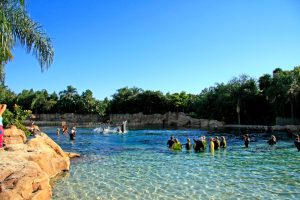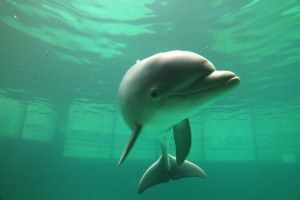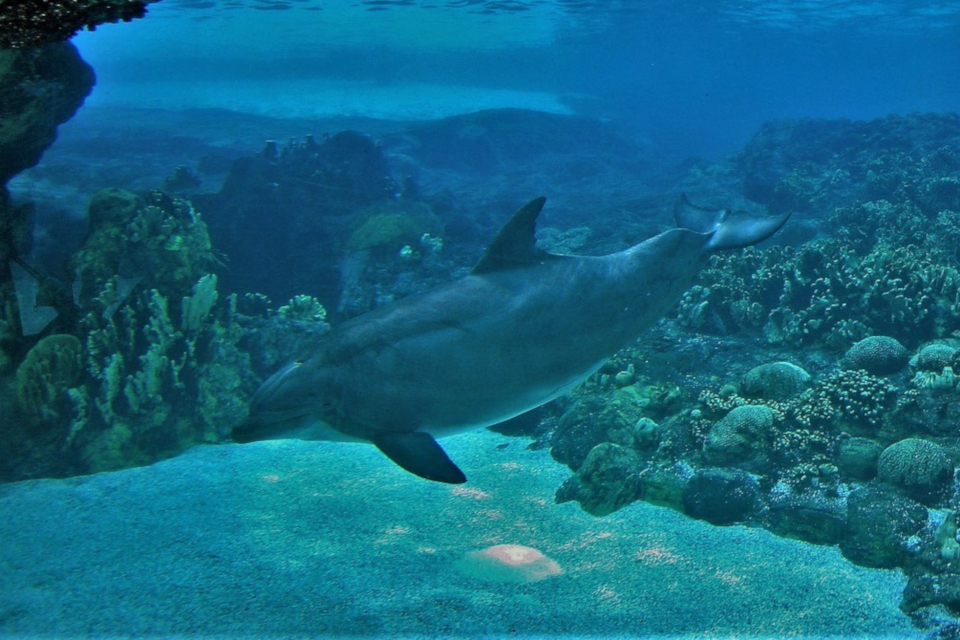Exclusive for zoos.media – 02.05.2019. Author: Philipp J. Kroiß
A new, comparative study on the life expectancy and survival of dolphins in nature and under human care brings along some fascinating results.
How long do dolphins live in dolphinariums and in nature?
There are many myths around dolphins life expectancy and longevity: some speak of animals that live a hundred years. This tale has already been disproved, but it persists – like many others. Reason enough to look a bit closer, using scientific methods. This has already been done in the past, but nowadays we have more data and should therefore take a look if, and if so what has changed. Dr. Kelly Jaakkola from the Dolphin Research Center and Kevin Willis from Minnesota Zoo have done just that and have compared data from nature, with data from the Marine Mammal Inventory Report (MMIR), introduced by the US government and which lists animals in dolphinariums.
Comparability is important

Zoo opponents like to claim that dolphins in dolphinariums have shorter lives than their conspecifics. In almost all cases, this argumentation can easily be countered, as the activists to not compare comparable sizes or data. Depending on how the calculations are carried out, the results can be bend to be either positive or negative. Dolphinariums could use such methods just as well and get results that prove the exact opposite. Reputable institutions however, do not make use of such methods, instead they opt for faultless scientific ones – so do the authors of the latest study. Anybody can check the calculations, the data is transparent and the conclusions are plausible.
It is difficult to obtain exact data from nature, as there will always be an estimated number of unreported cases, due to the fact that, other than in dolphinariums, the animals cannot at all times be seen, examined or closely supervised. Data from nature should always be interpreted with this in mind. Nevertheless, these technologies are getting more reliable and observations more precise – which is a huge advantage to ensure comparability. These long-term observations are very costly, but the only way to obtain reliable data.
In addition, the different wildlife populations were in different situations during the analysis. The study focuses only on bottlenose dolphins, presumably the most common dolphin species. The Indian River population is known for not really being in good condition – like many other populations. The Mississippi Sound population suffered under an oil spill, since data after the spill was not representative, the data related to, was from before the spill. The Sarasota Bay population is, just like latter, not in a good condition after the Deepwater-Horizon catastrophe.
Exciting results

If we compare the age at which they died, we will find, that the animals at the Indian River, on average, lived 8,3 years. In US dolphinariums, the animals, all recorded in the MMIR report, died, on average, after 21,0 years. Dolphins from Mississippi Sound died after 9,0 years, which shows, that even healthy populations, which they were at the time the data was collected, live more than ten years less in nature than under human care – a clear result. This debunks all gloomy predictions, claiming animals under human care only live up to six years, they cannot be based on data from the MMIR. But this is not the only interesting size.
The median life expectancy is also interesting. In Sarasota Bay it is 17,6 years, in US dolphinariums however, 24,0 years, and this includes the entire MMIR time. Looking at the last ten years and using the so called Kaplan-Meier analysis, we will establish a value of 29,2 years. The last decades, this value has continuously increased and improved, as the authors of the study, based on officially confirmed data, explain. Data on the survival of animals is generally used as an indicator for well-being, so the animals under human care fare far better than in nature.
Life expectancy is undoubtedly an important piece of the puzzle when it comes to the well-being of animals. But not only this is scientifically proven: Modern dolphinariums are places of animal welfare, in renowned dolphinariums animals are healthier (Fair et al., 2017) and less stressed (Monreal-Pawlowsky et al., 2017) than their wild conspecifics. They readily partake in training and even release happiness hormones (Clegg et al., 2018; Ridgway et al., 2014). More than 80 of the world’s most renowned scientists in the field, support the husbandry of these marine mammals in modern zoos and aquariums and emphasise the importance of these populations for conservation projects and science.
Dolphin calves – a delicate issue

We have to keep in mind, that both of the previously named sizes exclude calves. Why is that? It is extremely difficult to determine their death rate. We know that the death rate of young animals is extremely high the younger they are, this is because dolphins are born without an immune system. We can observe a young animal that has been alive for a few hours in a dolphinarium, but probably not in nature. During a spell of bad weather it is often impossible to go out to sea for days, it is difficult to view the animals afterwards and young dolphins, born during this time, cannot be recorded in the statistics.
This means that we have an estimated number of unreported cases, which cannot be ignored when interpreting the data. In Sarasota Bay, a healthy dolphin population that has become rare, the survival rate of the calves lies, including the estimated number of unreported cases, at 0,830 – just like that of dolphins from the MMIR, only here, without the estimated number of unreported cases. The death of dolphin calves can never be 100% prevented – not even under human care. The babies cannot be captured and then isolated to protect them, which is often done with premature human babies. The calf not only doesn’t have an immune system when it comes out of the womb, it has practically nothing. Within the first minutes of life, the calf learns how to breathe and swim, which it must be able to do immediately. The mother helps it here, which is usually essential for the calves development.
Infanticide is an issue with bottlenose dolphins – it exists in nature, but also under human care. Nobody knows why. The mother seems to decide that she does not want the baby and kills it, which is easy for her, as it can do almost nothing at first. A further issue with dolphin calves, existing in nature as well as under human care, is a phenomenon also known from humans: SIDS – the sudden infant death syndrome. The actual cause as to why human babies die, remains unknown until today. There are attempts at explanation and statistically identified risk factors, but a causal explanation has still to be found. The same is witnessed with dolphins. Perfectly healthy dolphin calves die and nobody knows why.
In dolphinariums many possible reasons can be ruled out, which is probably the reason as to why there already is a lower loss rate, than in wild populations in nature. Future data will further validate this. For starters, the current study shows that the survival rate of newborns, in the healthiest population in nature, with the estimated number of unreported cases, is equal to that in dolphinariums, where this estimated number of unreported cases does not exist. If you are interested, you can take a detailed look at the study here.
